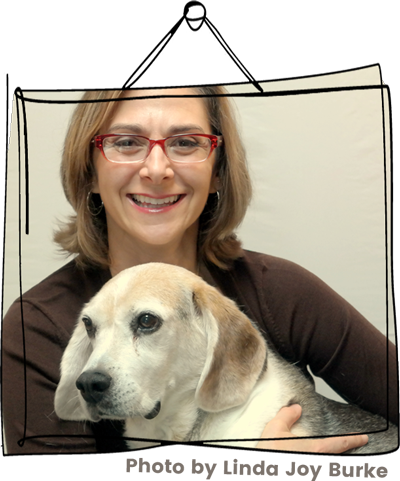Among our basic needs is a place of safety and belonging, yet many children face situation where their communities are under threat. A panel of middle-grade author/educators will model how they use literature to spark conversations on home and community, security, and identity. Three brief lesson plans, centered on exploring the meaning of place and designed to appeal to students with different learning styles, will be presented, followed by an opportunity for attendees to try out these activities in small groups.
Ruth W. Freeman, South Portland School Department, South Portland, ME
Karina Yan Glaser, Houghton Mifflin Harcourt, New York, NY
Janet Sumner Johnson, Capstone Young Readers, Logan, UT
Laura Shovan, Random House Children’s Books, Ellicott City, MD
Tricia Springstubb, Balzer and Bray, Cleveland Heights, OH
HANDOUT INFORMATION
A Sense of Place: Middle-grade Novels on Loss and Connection
Ruth Freeman: ruthfreemanbooks.com
Karina Glaser: Karinaglaser.com
Janet Sumner Johnson: janetsumnerjohnson.com
Laura Shovan: laurashovan.com
Tricia Springstubb: triciaspringstubb.com
Mentor Texts (Books that deal with loss & connection in regards to place):
Crenshaw (Katherine Applegate)
Home Of The Brave (Katherine Applegate)
Front Desk (Kelly Yang)
The War That Saved My Life (Kimberly Brubaker Baker)
14 Hollow Road (Jenn Bishop)
The Epic Fail Of Arturo Zamora (Pablo Cartaya)
Counting Thyme (Melanie Conklin)
It Ain’t So Awful, Falafel (Firoozeh Dumas)
City Of Ember (Jeanne Duprau)
Last Day On Mars (Kevin Emerson)
One Good Thing About America (Ruth Freeman)
The Vanderbeekers of 141st Street (Karina Glaser)
Refugee (Alan Gratz)
The Night Diary (Veera Hiranandani)
The Last Great Adventure of the PB&J Society (Janet Sumner Johnson)
Amina’s Voice (Hena Khan)
Inside Out And Back Again (Thanhha Lai)
Listen, Slowly (Thanhha Li)
The Exact Location Of Home (Kate Messner)
The Stars Beneath Our Feet (David Barclay Moore)
A Long Walk To Water (Linda Sue Park)
A Different Pond (Bao Phi, Illustrated By Thi Bui)
The House That Lou Built (Mae Respicio)
The Shadow Cipher (Laura Ruby)
Esperanza Rising (Pam Munoz Ryan)
The City On The Other Side (Mairghread Scott)
Paper Wishes (Lois Sepahban)
The Last Fifth Grade of Emerson Elementary (Laura Shovan)
Every Single Second (Tricia Springstubb)
What Happened on Fox Street (Tricia Springstubb)
Locomotion (Jacqueline Woodson)
LESSON PLANS CENTERED ON EXPLORING THE MEANING OF PLACE
Mapmaking Mini-lesson
Place shapes a child’s experiences, relationships, and perceptions of both herself and the wider world. This exercise helps students consider the places they live in a concrete, visual way, and allows them to take ownership of their environments.
—Children think about where they live, usually their street and streets nearby. Children unable to explore their neighborhoods can think about their houses or apartments. Some children may not consider where they live now home and want to draw another place. Encourage students to picture where they most feel “at home”.
—Children draw maps that include their house in relation to places important in their lives: school, homes of friends and relatives, a playground, favorite shops, places of worship….Drawing skills are not important–this is their map!
—Children annotate places where they’ve made observations/discoveries or had memorable experiences. Later, these notes can serve as catalysts for writing personal narratives.
—Children share and discuss their maps. Encourage questions, comparing and contrasting.
Kinetic Discussion Activity
Discussion of a text is always a great way to help students reflect on what they value in their homes and communities. Those discussions are more fun and memorable when a kinetic element is added. One example is an exercise called “Crossing the Line.”
- Prepare agree/disagree statements on the themes from the text you wish to discuss.
- Make a line, and have all students start on one side of the line. If they agree with the statement, they cross the line. If they disagree, they stay.
- Prepare follow-up questions to help them process what they learned/felt through the kinetic activity.
(Classroom Activities: Discussion With Your Feet, TeachHub.com, Referenced 17 July 2018 from http://www.teachhub.com/classroom-activities-discussions-your-feet)
Additional online resources with ideas for kinetic discussions:
- The Big List of Class Discussion Strategies by Jennifer Gonzalez: https://www.cultofpedagogy.com/speaking-listening-techniques/
- 5 Ways to Make Class Discussions More Exciting by Dr. Richard Curwin: https://www.edutopia.org/blog/make-class-discussions-more-exciting-richard-curwin
Ode to Place Mini Lesson
Goal: Students will write an ode to a favorite or important place in their lives.
Literary skills: Use hyperbole and imagery to create the celebratory tone of a poetic ode.
Materials: Baggies of everyday objects for hyperbole exercise. (Paperclip, crayons, tissue, etc.) Copies of model poem, such as “Harlem Is the Capital of My World.” (Tony Medina, Love to Langston)
1. Introduce concept: Odes are poems of praise and celebration.
2. Review key tools of an ode: Description/imagery of the five senses, simile, hyperbole.
3. If time: Hyperbole exercise
Groups: examine an everyday object.
Give three reasons why this object is amazing. Exaggeration encouraged!
4. Read and discuss mentor text.
Reactions.
Share description, simile, hyperbole that jumps out at you.
5. Write an ode.
Cross out and replace key words in the model poem to create an ode.
Share drafts with class




